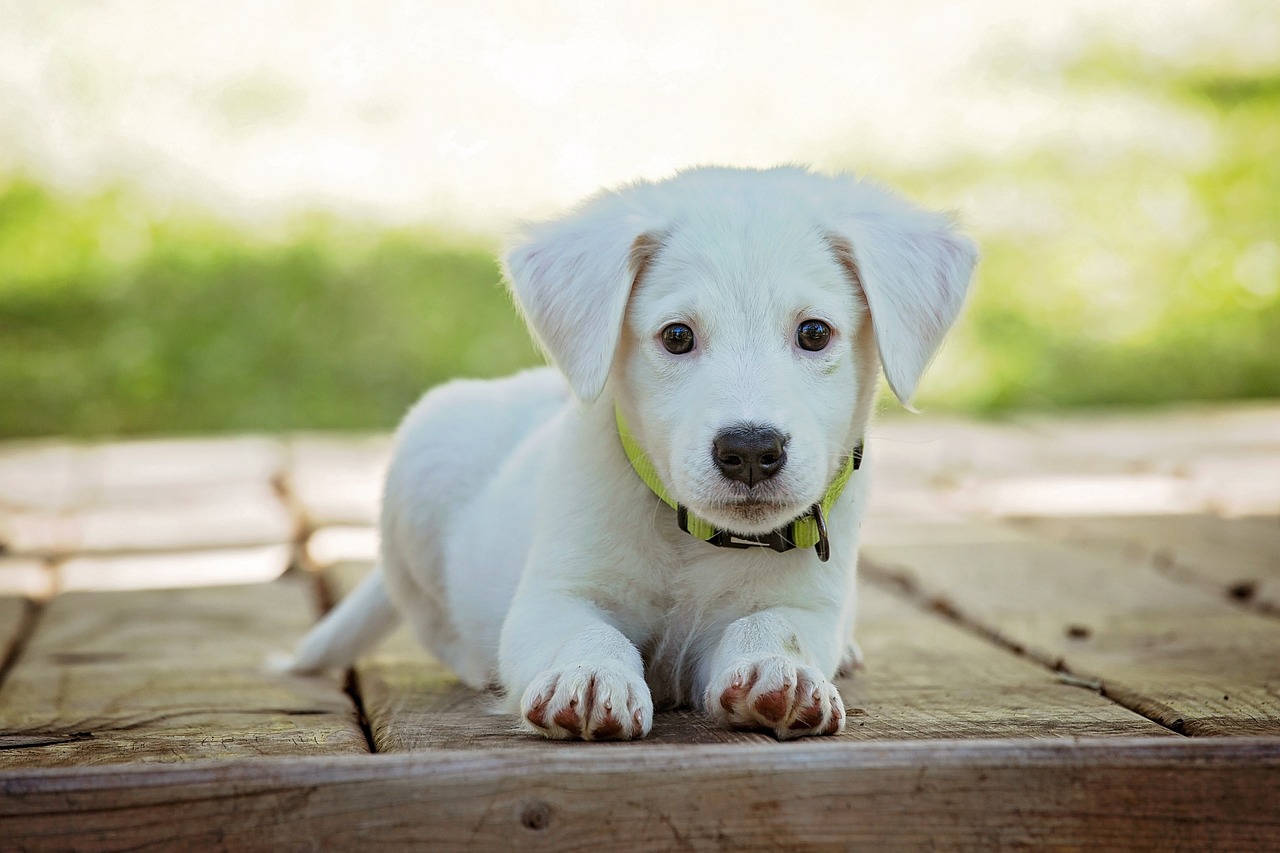
Photo a dog by 3194556 on Pixabay
If you’ve recently welcomed a new dog into your life, congratulations! Dogs bring joy, love, and companionship to our lives. However, it’s important to understand that owning a dog comes with financial responsibilities. Learning how to budget for a dog will help you ensure that you can provide the best care for your furry friend without causing financial strain. In this article, we’ll explore the costs and expenses associated with owning a dog and provide tips on how to budget effectively.
1. How Much Does it Cost to Own a Dog?
Taking care of a dog is a long-term financial commitment that can last for over a decade. The expenses can be divided into upfront costs and recurring costs.
Upfront Costs
Upfront costs of owning a dog can be higher than expected. According to a 2022 report by Rover.com, the actual upfront costs of owning a dog ranged from $1,050 to $4,480, while 38% of dog owners believed their upfront costs would be around $500. Initial expenses may include spay or neuter surgery, vaccinations, dog registration, a leash, harness, toys, crate, and a comfortable dog bed.
Recurring Costs
Recurring expenses for owning a dog can add up quickly. On average, these expenses can range from $480 to $3,470 per year. The most common recurring costs include food, vet visits, preventative health treatments (such as flea, tick, and heartworm prevention), grooming, and annual dog registration fees. Optional expenses, such as pet insurance, dog walkers, or sitters, can add an additional $1,210 to $4,040 per year.
It’s important to note that these cost estimates can vary based on factors such as the age, size, and health of your dog, as well as your location and lifestyle.
2. Decide Between Adopting or Buying

When considering getting a dog, you have the option to either adopt from a rescue or shelter or buy a dog from a pet store or breeder. The choice between adoption and buying can have an impact on your budget.
Adopting a Dog
Adopting a dog from a rescue or shelter is typically cheaper than buying from a pet store or breeder. Adoption fees can range from as low as $50 to as high as $700. Shelters and rescues often cover initial medical expenses, such as spay or neuter surgery, vaccinations, ID tags, and microchipping.
Buying a Dog
Buying a dog can be considerably more expensive than adopting. The price can range from $1,000 to $4,000 or more, depending on the breed. Some breeders may include initial vaccinations, ID tags, microchipping, and other medical necessities in the price, while others may not. It’s important to clarify what is included before making a commitment. If you’re buying a purebred dog, ask about specific care requirements and certification documents of lineage.
3. Know Which Breed is Best for You
Choosing the right breed for you and your family is crucial for creating a realistic budget. The costs of owning a dog can vary based on factors such as the dog’s health history, size, age, your lifestyle, and your location. Here are some popular dog breeds and their average monthly costs:
-
Labrador Retriever: $50 to $100
-
Golden Retriever: $100 to $150
-
Australian Shepherd: $50 to $150
-
German Shepherd: $50 to $150
-
Goldendoodle: $50 to $150
It’s important to consider that certain breeds may have specific medical issues that require additional care. Research your chosen breed to understand their unique needs and potential health challenges.
4. Identify Basic Expenses

Owning a dog involves various expenses, both expected and unexpected. To create an effective budget, it’s important to identify and account for these expenses. Here are the key areas to consider:
Veterinary Care
Routine vet care is essential for your dog’s health. According to the American Pet Products Association (APPA), pet owners spend an estimated $242 on routine vet care and $458 on surgical procedures per year. Preventative visits can cost anywhere between $50 and $100 on average. Costs can vary depending on the type of dog, their healthcare needs, and your location.
Dental care is also a budget consideration, with an average annual cost ranging from $100 to $1,000, depending on the dog’s size and whether anesthesia is required.
Vaccinations
Keeping up with a vaccination schedule is crucial for preventing illness and disease. Core vaccines, such as distemper, adenovirus/hepatitis, parvovirus, and rabies, are essential for your dog’s health and can cost between $320 to $480 for the first year and $100 to $320 per year thereafter. Non-core vaccines for specific conditions or risks can range from $20 to $40 per vaccine.
Pet Insurance
While not mandatory, pet insurance can save you money on vet bills. Premiums typically range from $24 to $50 per month, and annual premiums for accident and illness insurance average $582. Consider the options available and choose a policy that suits your needs and budget.
Preventative Treatment
Flea, tick, and heartworm prevention treatments are important for your dog’s well-being. Annual costs for these treatments can vary depending on the type of treatment:
-
Flea shampoo: $20 to $40
-
Flea collars: $30 to $170
-
Flea prevention tablets: $40 to $150
-
Flea and tick prevention (topical application): $120 to $240
-
Heartworm prevention tablets: $56 to $215
-
Flea, tick, and heartworm prevention (topical application): $190 to $261
Food and Treats
The cost of dog food depends on the size, activity level, and dietary restrictions of your dog. Dry food, or kibble, is typically the most affordable option, ranging from $30 to $130 for a 24-pound bag. Wet or canned food can range from $25 to $68 for a case of 13-ounce cans. Fresh dog food delivery can cost between $60 and $140 per month.
Grooming
Grooming needs vary based on your dog’s size and coat type. Long-haired breeds may require professional grooming to prevent tangles, while larger breeds may need professional grooming for maintenance. Grooming costs can range from $20 to $150 per month and may include shampooing, haircuts, brushing, blow-drying, and nail clipping.
Boarding/Kennel
Boarding or kennel costs are important considerations if you’ll be away from home. The average cost of boarding per year is $228, while doggie daycare can range from $15 to $40 per day.
ID Tags, Microchipping, and Licensing
Most states require dog owners to obtain a license for their pets. Licensing fees can range from $20 to $100 per year. Microchipping, which helps identify lost dogs, costs between $25 and $80. ID tags are available for $5 to $20 at pet stores.
Neutering/Spaying
Spaying or neutering your dog is important for population control and can cost between $320 and $800. This surgery can also have health benefits and reduce certain behavioral issues.
Dog Crate and Bed
A dog crate provides a safe space for your dog, while a dog bed offers comfort. Small crates can start at $20, while larger ones can cost up to $330. Dog beds can range from $10 to high-end designer options.
Behavioral Training
Training classes can help shape your dog’s behavior. Group programs typically cost between $20 and $50 per class, while private training can range from $40 to $120 per hour.
Toys
Toys are essential for keeping your dog entertained and engaged. On average, pet parents spend about $56 per year on toys. Rotating different toys can help keep your dog interested.
5. General Savings

When budgeting for a dog, it’s important to consider additional ways to save money. Understanding the size and breed of your dog will help you estimate expenses. The ASPCA estimates that the annual cost for a small dog is $512, a medium dog is $669, and a large dog is $1,040. To prepare for unexpected expenses, it’s also wise to have emergency savings of around $500 and contribute to a savings account on a monthly basis. Emergency savings can also provide an alternative to ongoing pet insurance costs.
6. Trimming Your Budget
Tracking your pet expenses and finding ways to save money can help you stay within your budget. Here are some additional tips:
-
Make your own toys and accessories or buy second-hand for sturdier items like crates and water bowls.
-
Learn to groom your dog at home.
-
Join a subscription service from an online pet food store for discounts on dog food.
-
Use reward and cashback credit cards for purchases.
-
Consider hiring friends, neighbors, or family members as dog walkers or pet sitters at a lower cost.
-
Look for senior and military discounts offered online, in-store, or through local organizations.
-
Explore grants, financial aid, and other resources for assistance with special circumstances.
Conclusion
Budgeting for a new dog is essential to ensure that you can provide the best care for your furry friend without financial stress. By understanding the costs and expenses associated with owning a dog and implementing budgeting strategies, you can enjoy the companionship and love of your dog while maintaining financial stability. Remember to consider your dog’s specific needs, research your chosen breed, and be prepared for unexpected expenses. With proper planning and budgeting, you can create a happy and healthy life for you and your four-legged companion.
